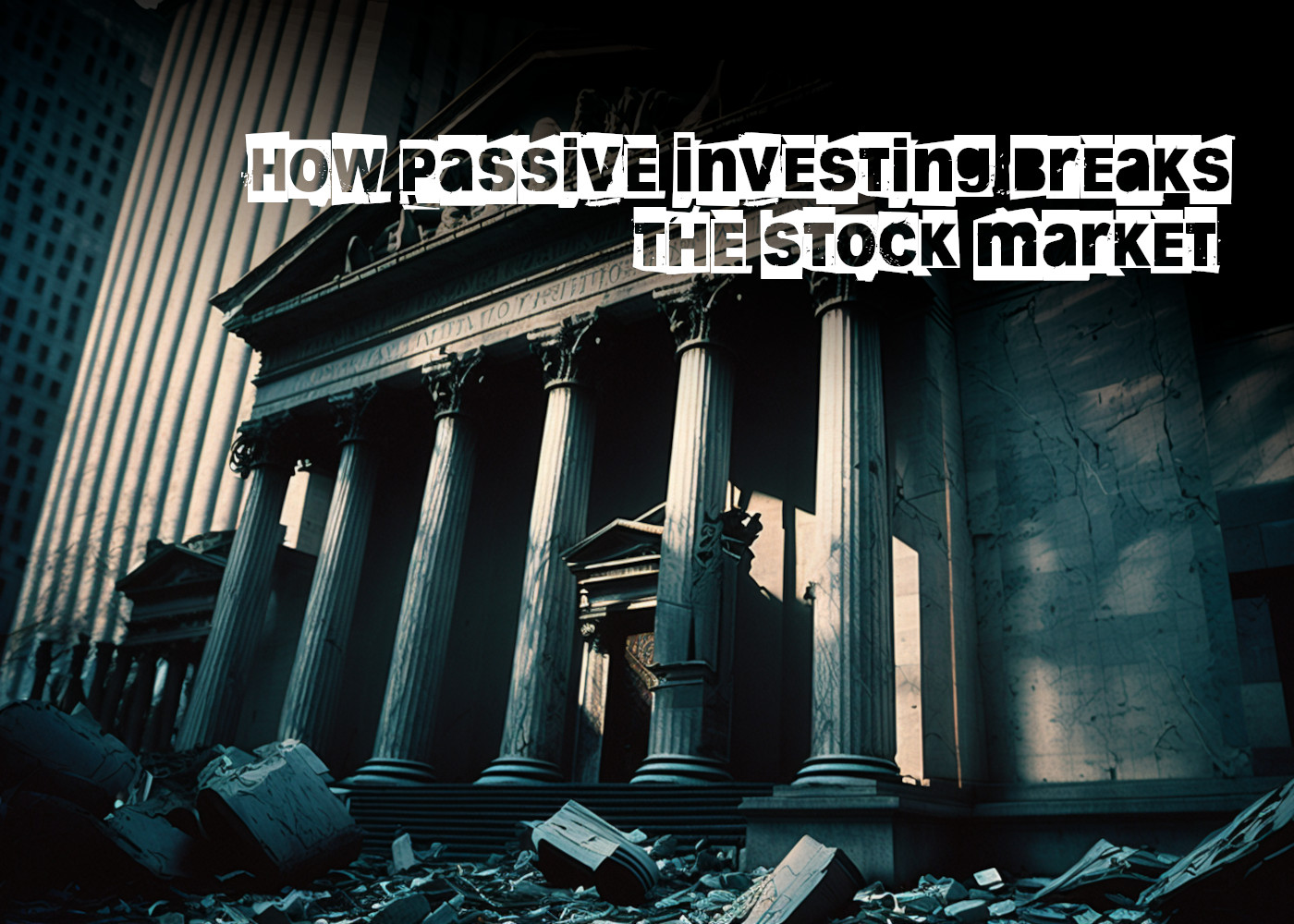How passive investing distorts stock market prices

One of the problems with writing this article is that we must necessarily deal in abstraction. It’s difficult to point to any given market event and say: passive caused that!
We have a good idea that market distortions are happening, and will get worse in the future, but we can’t hold them in the palm of our hand. I draw a similarity to the first doctors who had a hunch that microscopic germs were laying waste to the human body but what visible proof could they summon?
Enough with the disclaimers though, let’s wade into the brambles.
Passive investing, steady and sure,
With patience and time, it will endure.
No need to pick stocks or try to time,
Just let the market do its climb.
ETFs and index funds, the way to go,
Diversify your portfolio, you know.
Low fees, low stress, no need to guess,
Just sit back and let your wealth progress.
Passive investing, a simple way,
To let your money work every day.
No need to worry, no need to fret,
Just keep investing, and don’t forget.
-ChatGPT
If you think about it, passive investing operates on the simplest set of instructions possible. If I give you money then buy. If I ask for money then sell.
That’s how Mike Green describes passive investing in two sentences. If we break down this short quote we can already see where a few problems lay. “If I give you money then buy.” Nowhere in that set of instructions do we say, if I give you money then buy,
- Fairly valued companies
- Companies with solid balance sheets
- Companies that don’t have a lot of debt
- Companies that definitively won’t be bankrupt in a month
- Etc.
Passive investing does not discriminate which means that, all else being equal, a crappy company that’s included in an index fund can be bought just as much as an outstanding company.
While we like to imagine that markets are things to make us money, their actual function is harnessing crowd wisdom to allocate capital to businesses with a high chance of success. Passive investing doesn’t give a shit about any of that. By allocating based on market cap or other “dumb” metrics, passive disperses capital to good and bad businesses alike.
Passive investing also creates a perverse incentivize for companies. In the analog days when Masters of the Universe made investment decisions according to DCF models, price to sales and the management team’s track record, a company’s incentive was to be fiscally responsible enough to attract discerning investors.
Not that all companies did so! But that was at least the incentive. As passive investing increasingly controls the capital the question is no longer how can we have the most fiscally prudent company, but how can we get included in the index?
Markets melt up and down
Mike Green has estimated that passive indexing now accounts for more than 50% of all buying in the S&P 500. How does that affect markets? Well it reduces the chance that we ever find a fair price for a security.
A passive fund doesn’t care about fundamentals or whether a stock is overvalued. The passive fund assumes that whatever price a stock is currently trading at is the “right” price, and will continue to buy so long as there is money coming in.
Mike would argue that one of the reasons the market hasn’t crashed more in the last year, despite weakening economic conditions, mass tech layoffs, bank runs, high interest rates and continued inflation, is that passive inflows have propped the market up. Passive DGAF, passive buys no matter what the wack ass “fundamentals” are.
Passive inflows prop up markets, what’s wrong with that I hear you say. Well, what happens if the position reverses? If enough people lose their jobs and are no longer contributing to their retirement accounts* we could see the opposite effect. Heavy selling, rapidly falling prices and what will passive do? Nothing, because it doesn’t care about fundamentals or how attractively stocks are priced.
*Employees contributing to their retirement accounts is a major source of inflows to passive indexing funds
If nobody gives a passive fund money it won’t buy, even if the SPX is trading at 500. Our market is moving towards a point where valuations will depend more on,
- How many people are employed and paying into their retirement fund
As opposed to,
- Fair valuations based on market fundamentals
This is not a 0 or 1 outcome, the reality lies somewhere in the middle. Active managers will always have some control over pricing, as will other market forces. However, in the background increasingly lurks passive, ready to buy or sell blind to fundamentals.
The natural conclusion could be, according to Mike, a highly exaggerated boom and bust cycle. Active managers buffer markets by selling when prices are high and buying when they’re low. Without their steadying hand we’re likely to get increasingly zany and unpredictable outcomes.

Conclusions
If you want to learn more about how passive investing affects markets you should listen to Mike Green describe the situation in his own words. My recommendation would be his interview with Demetri Kofinas and his interview with Grant Williams. These are both older episodes but the fundamentals have not changed.
Mike has predicted that we’re likely to experience crack up booms in the future because of passive, which sounds great until you consider that the great booms could be followed by terrible crashes. Just what we’ve been craving, more volatility right? Hooyah!

